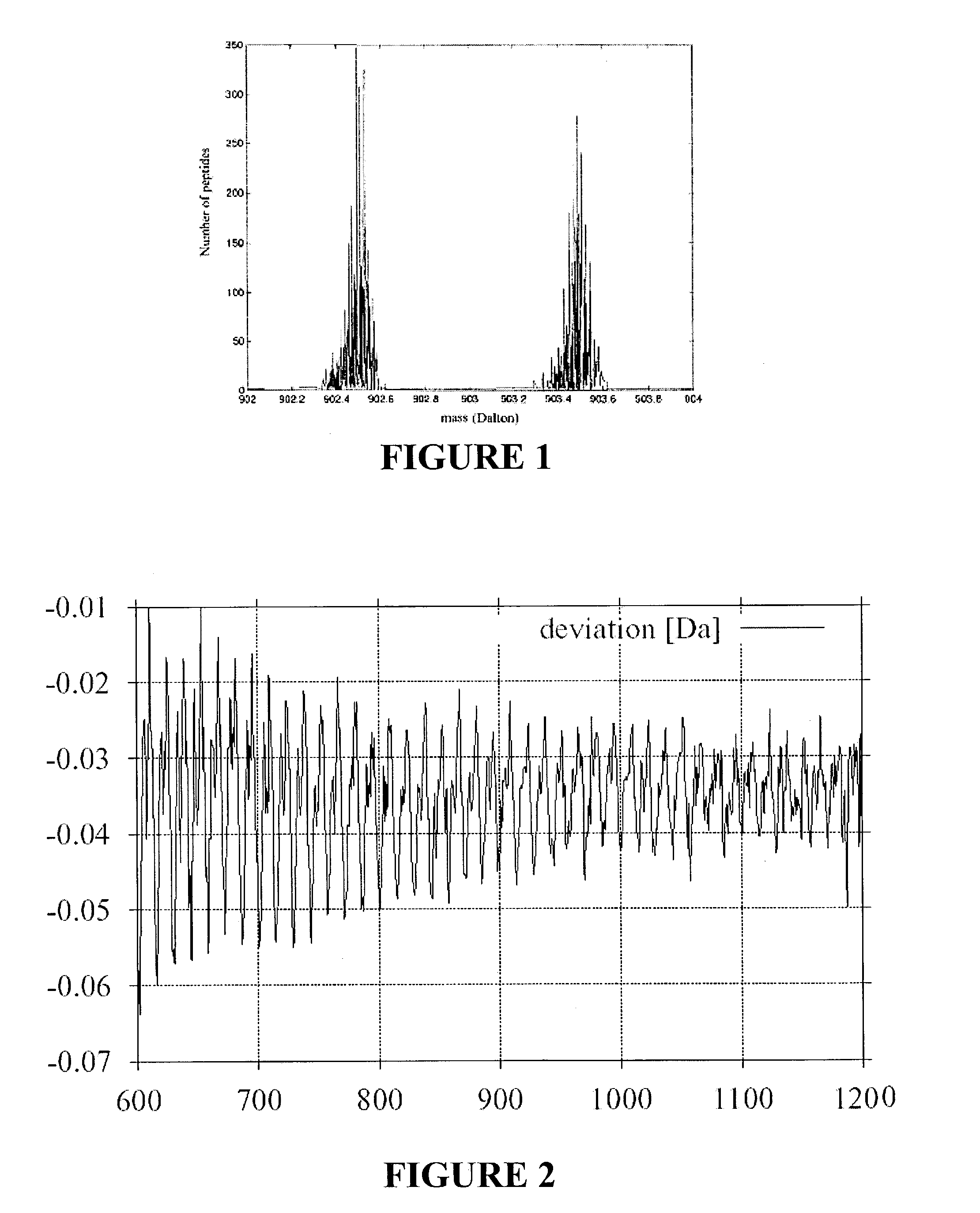Mass determination for biopolymers
a biopolymer and mass determination technology, applied in the field of mass spectrometric determination, can solve the problems that the method of recalibration described cannot be used if the mass spectrometer is not equipped with a mass spectrometer, and the accuracy of the mass determination is not always satisfactory, so as to improve the identity search, improve the mass accuracy, and prevent the trapping of peptides with neighboring masses
- Summary
- Abstract
- Description
- Claims
- Application Information
AI Technical Summary
Benefits of technology
Problems solved by technology
Method used
Image
Examples
Embodiment Construction
[0025]The invention is based on the findings exhibited in FIGS. 1 to 3, showing that the true masses of peptides do not cover a continuous band of masses, but only narrow peaks for each number of nucleons in the peptide.
[0026]FIG. 1 shows the frequency distribution of all peptide masses in a mass range from 902 to 904 atomic mass units obtained by a typical virtual digestion of the SwissProt protein-sequence database (S. Gray et al., cited above). An average value and a distribution range can be constructed from these values for each mass number. The distribution width (FWHM) is only approximately 0.1 atomic mass units wide and a good three quarters of the mass range is empty, i.e., no peptide masses can occur here at all. For each mass number, i.e., for each integer number of nucleons, there is a distribution which reflects the average masses of the nucleons and the distribution of the mass values. The distribution of mass values stems from the different nuclear binding energies of...
PUM
| Property | Measurement | Unit |
|---|---|---|
| mass | aaaaa | aaaaa |
| mass | aaaaa | aaaaa |
| mass | aaaaa | aaaaa |
Abstract
Description
Claims
Application Information
 Login to View More
Login to View More - R&D
- Intellectual Property
- Life Sciences
- Materials
- Tech Scout
- Unparalleled Data Quality
- Higher Quality Content
- 60% Fewer Hallucinations
Browse by: Latest US Patents, China's latest patents, Technical Efficacy Thesaurus, Application Domain, Technology Topic, Popular Technical Reports.
© 2025 PatSnap. All rights reserved.Legal|Privacy policy|Modern Slavery Act Transparency Statement|Sitemap|About US| Contact US: help@patsnap.com


